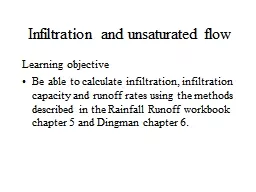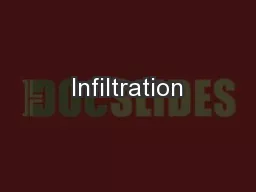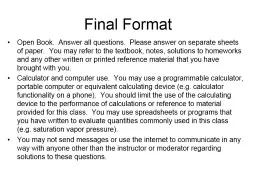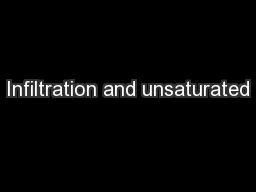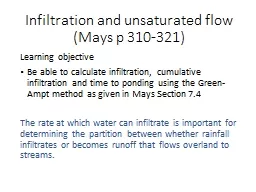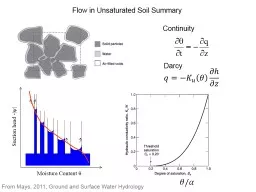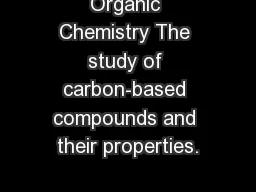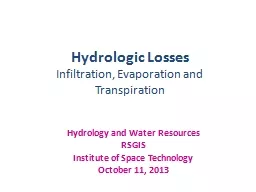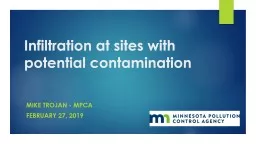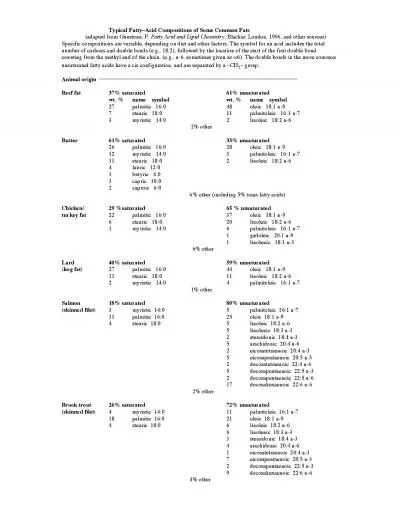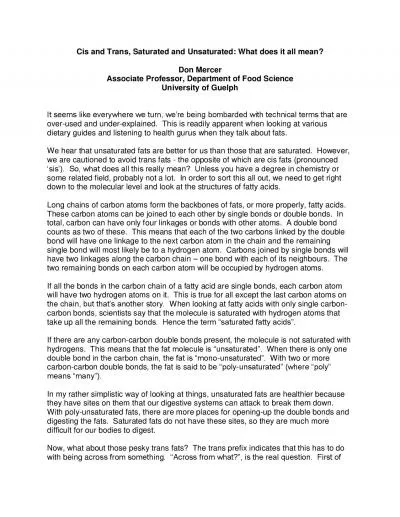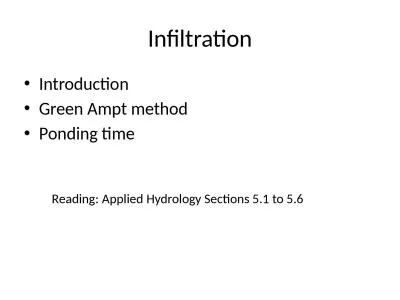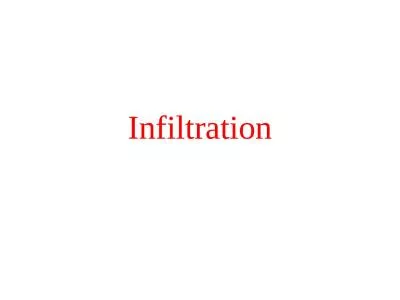PPT-Infiltration and unsaturated flow
Author : test | Published Date : 2017-05-07
Learning objective Be able to calculate infiltration infiltration capacity and runoff rates using the methods described in the Rainfall Runoff workbook chapter 5
Presentation Embed Code
Download Presentation
Download Presentation The PPT/PDF document "Infiltration and unsaturated flow" is the property of its rightful owner. Permission is granted to download and print the materials on this website for personal, non-commercial use only, and to display it on your personal computer provided you do not modify the materials and that you retain all copyright notices contained in the materials. By downloading content from our website, you accept the terms of this agreement.
Infiltration and unsaturated flow: Transcript
Download Rules Of Document
"Infiltration and unsaturated flow"The content belongs to its owner. You may download and print it for personal use, without modification, and keep all copyright notices. By downloading, you agree to these terms.
Related Documents

